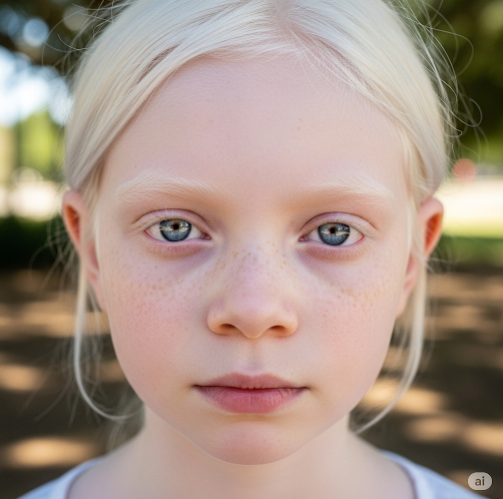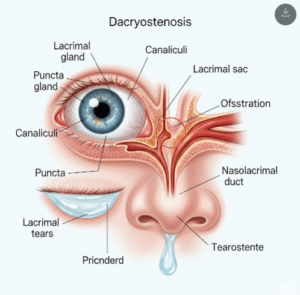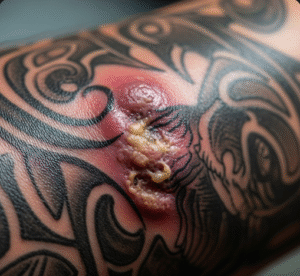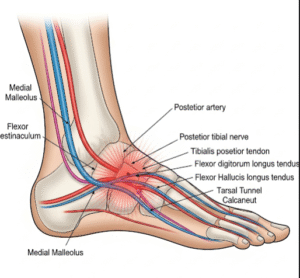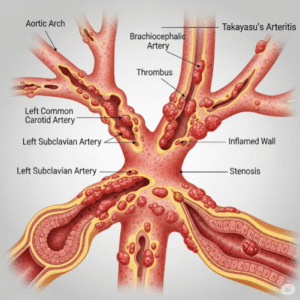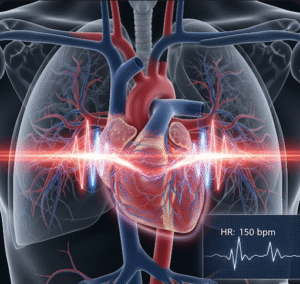Overview
Oculocutaneous albinism (OCA) is a rare genetic condition characterized by a reduced or complete lack of melanin—the pigment that gives color to the skin, hair, and eyes. This leads to pale skin, light-colored hair, and vision problems. People with OCA are more vulnerable to sunburn, skin cancer, and vision impairment due to the lack of protective pigmentation.
OCA is present from birth and affects people of all ethnic backgrounds. There are several types of OCA, with varying degrees of pigmentation and visual symptoms, depending on the gene mutations involved.
What is Oculocutaneous Albinism?
Oculocutaneous albinism is an inherited autosomal recessive disorder that affects melanin production in the melanocytes of the eyes (oculo), skin (cutaneous), and hair. It occurs when a person inherits two copies of a faulty gene, one from each parent.
There are seven recognized types of OCA (OCA1 to OCA7), caused by mutations in different genes (e.g., TYR, OCA2, TYRP1). Each type has varying degrees of pigment loss and visual function.
Despite common misconceptions, people with OCA have normal intelligence and lifespan, though they require special care for their eyes and skin.
Symptoms
Symptoms of OCA affect the skin, hair, eyes, and vision. Common signs include:
- Pale or white skin
- Light blonde or white hair
- Blue, gray, or light brown irises that may appear translucent
- Reduced visual acuity (blurred vision)
- Nystagmus (involuntary eye movements)
- Photophobia (light sensitivity)
- Strabismus (crossed eyes)
- Foveal hypoplasia (underdeveloped center of the retina)
- Lack of depth perception or stereoscopic vision
- Increased risk of sunburn and skin cancer
The degree of symptoms depends on the OCA type and melanin production level.
Causes
OCA is caused by mutations in genes that control melanin synthesis, such as:
- TYR gene (OCA1): Affects tyrosinase enzyme required for melanin production
- OCA2 gene: Associated with partial melanin production
- TYRP1, SLC45A2, and other genes: Related to additional OCA types
These gene mutations disrupt melanin formation in the eyes, skin, and hair, resulting in characteristic features of the condition.
Risk Factors
The main risk factor is family history. OCA is inherited in an autosomal recessive pattern, meaning:
- Both parents must be carriers of the faulty gene
- The child has a 25% chance of having OCA
- There is a 50% chance the child will be a carrier
OCA can occur in all ethnic groups, though some types are more common in specific populations.
Complications
Without proper care, individuals with OCA may face:
- Severe sunburns
- Higher risk of skin cancer, including squamous and basal cell carcinoma
- Permanent vision impairment
- Psychosocial challenges due to visible differences and stigma
- Educational difficulties if visual needs are not supported
- Misunderstanding or discrimination, especially in regions where awareness is limited
With the right support and precautions, individuals with OCA can live healthy, fulfilling lives.
Prevention
There is no way to prevent OCA, but genetic counseling and early detection can help families manage risks and prepare for care:
- Carrier testing for at-risk couples
- Prenatal genetic diagnosis in families with known OCA mutations
- Early eye exams in newborns with visible signs
- Sun protection education for caregivers and patients
- Awareness programs to reduce social stigma
Treatment Options in Korea
South Korea provides comprehensive, multidisciplinary care for individuals with OCA, focusing on vision rehabilitation, dermatologic protection, and genetic counseling.
1. Diagnosis
- Clinical evaluation of skin, hair, and eye pigmentation
- Ophthalmologic testing: Visual acuity, eye alignment, and nystagmus assessment
- Electroretinography (ERG) and visual evoked potential (VEP) testing
- Genetic testing to identify the specific type of OCA
- Skin examination to check for sun damage or skin cancers
2. Eye Care and Vision Management
- Prescription glasses or contact lenses to improve vision
- Tints or photochromic lenses for photophobia
- Low vision aids: Magnifiers, digital readers, large-print materials
- Vision therapy and special education resources for children
- Regular monitoring for signs of strabismus or retinal issues
3. Skin Care and Sun Protection
- Daily sunscreen use (SPF 50+)
- Protective clothing, hats, and sunglasses
- Regular dermatological checks for skin cancer
- Education on UV protection starting from infancy
4. Genetic Counseling and Family Support
- Provided in major Korean hospitals to explain inheritance patterns, testing options, and family planning considerations
5. Top Hospitals in Korea for OCA Care
- Severance Hospital (Yonsei University) – Genetics and Ophthalmology Center
- Asan Medical Center – Pediatric and Genetic Clinic
- Samsung Medical Center – Low Vision and Genetic Counseling Services
- Seoul National University Hospital – Rare Disease Support Center
- CHA Bundang Medical Center – Vision Rehabilitation and Dermatology
These facilities offer:
- Integrated care for genetic, eye, and skin health
- Specialist teams for children and adults
- Advanced imaging and diagnostic labs
- Support services for international families and multilingual consultation

